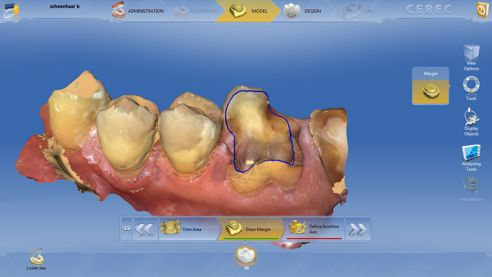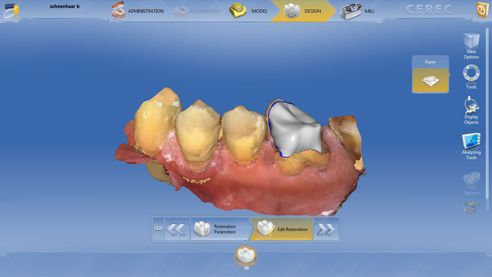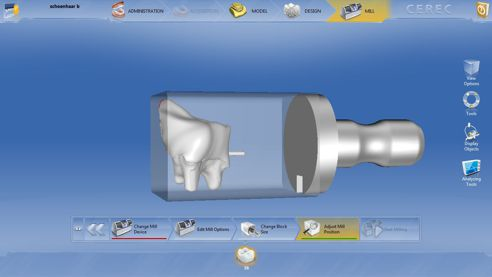Hybrid ceramic core build-ups: experiences in experimental clinical use
Peter Neumann (a dental surgeon at the dental practice "Neumann, Brausewetter & Collegen", in Berlin, Germany) has used the new VITA ENAMIC hybrid ceramic (VITA Zahnfabrik, Bad Säckingen, Germany) in combination with CEREC technology (Sirona Dental GmbH, Wals, Austria) to design and fabricate core build-ups upon which a crown can be cemented as part of the same session. This type of restoration is still at an experimental stage, however, he is already putting it into practice with positive clinical results. In the following interview, Mr. Neumann provides the answers to some questions on this clinical approach.
DV: How many endodontic crown restorations with CAD/CAM-fabricated core build-ups have you carried out using the VITA ENAMIC hybrid ceramic, and for how long have you been observing clinical use of this special indication?
Peter Neumann: In the past 2.5 years, I have completed approx. 30 restorations of this kind.
DV: Why do you consider VITA ENAMIC to be particularly suited to this "new" form of CAD/CAM restoration, and what is your conclusion at this point regarding its clinical success?
Peter Neumann: Core build-ups fabricated using VITA ENAMIC are not to be used as standard, however, they have proven themselves to be an ideal solution in our practice in cases of severe substance loss. As a material, the hybrid ceramic is particularly suitable for core build-ups because the modulus of elasticity is very similar to that of dentin. Other benefits during application include extremely short milling times – important in chairside treatments – as well as the outstanding etching pattern offered by the hybrid ceramic. Once adhesive bonding has been completed, subsequent preparation can also be quickly and easily carried out, and in the case of a fracture, the build-up can also be removed again relatively simply.
DV: In your opinion, what do practices and laboratories have to take into consideration with regard to restoration design, wall strength and bonding when using the hybrid ceramic for this indication?
Peter Neumann: As the use of this type of restoration is recommended particularly in cases of severe substance loss, the residual tooth substance must be protected as far as possible during preparation. It is important in all cases to achieve what is known as a "ferrule design", i.e. a circular enclosure of the root. Ultimately, a secure bond is more important for stability than the length of the post.
DV: What feedback have you received from your patients following successful placement of the VITA ENAMIC restorations mentioned here?
Peter Neumann: In the situations described and most importantly in the case of immediate restoration, patients learn to really appreciate the possibilities afforded by modern CAD/CAM dentistry. Most did not expect that it would be possible to retain their tooth and are incredibly grateful for it.
DV: In what areas do you see further opportunities and possibilities with regard to clinical application of this CAD/CAM material?
Peter Neumann: I also use VITA ENAMIC in functional treatments, for example in order to rebuild occlusal surfaces with what are known as "table top" preparations so that the maxillomandibular relationship can be restored. I also consider superstructures to be a further indication area as high load capacity also plays a particularly important role in this case.
DV: Thank you for talking to us, Mr. Neumann!







